Abstract
1. The influence of barbiturates on neuromuscular transmission at end-plates of frog sartorius muscles was investigated electrophysiologically on preparations bathed in Ringer solution containing a low concentration of calcium and a high concentration of magnesium.
2. Effects of a convulsant barbiturate, 5-(2-cyclohexylideneëthyl)-5-ethyl barbituric acid (CHEB), were compared with those of phenobarbitone.
3. CHEB and phenobarbitone increased the mean quantum content of the end-plate potentials and decreased the mean amplitude of the miniature end-plate potentials.
4. Both barbiturates enhanced the duration of the nerve-terminal action potential and had little or no effect on the effective resistance of the skeletal muscle membrane.
Full text
PDF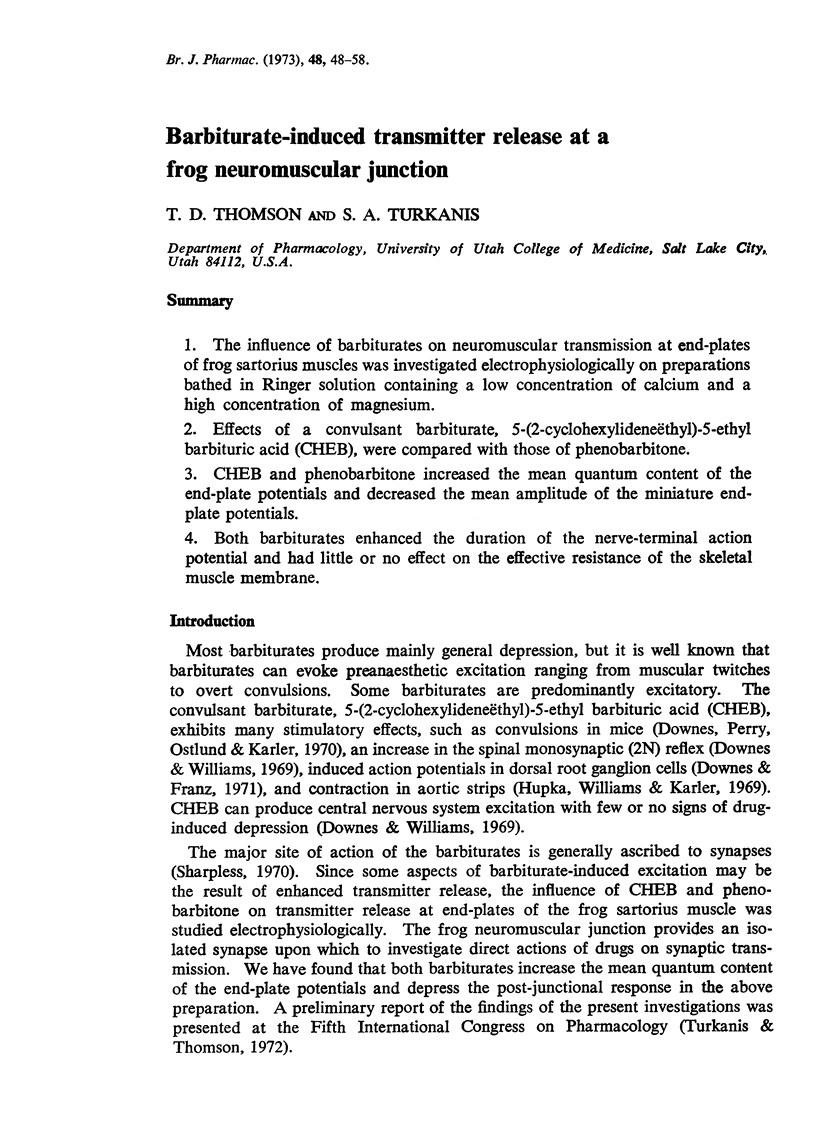
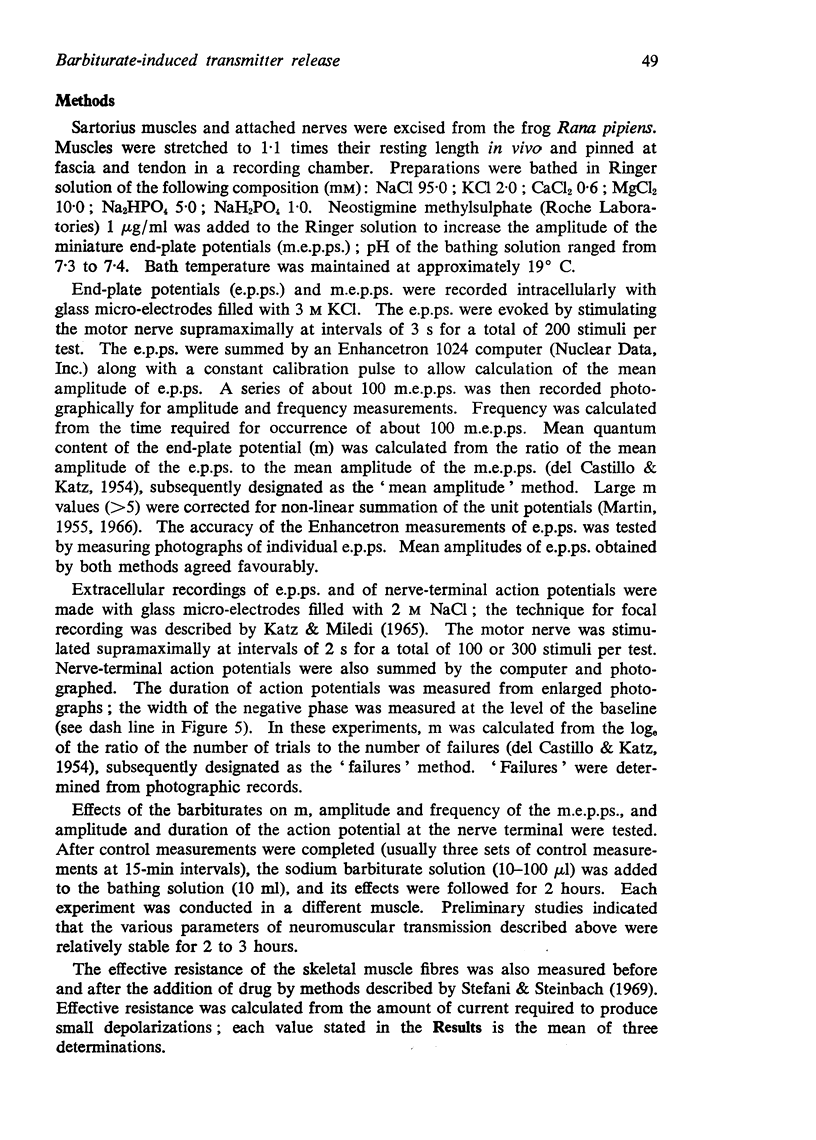
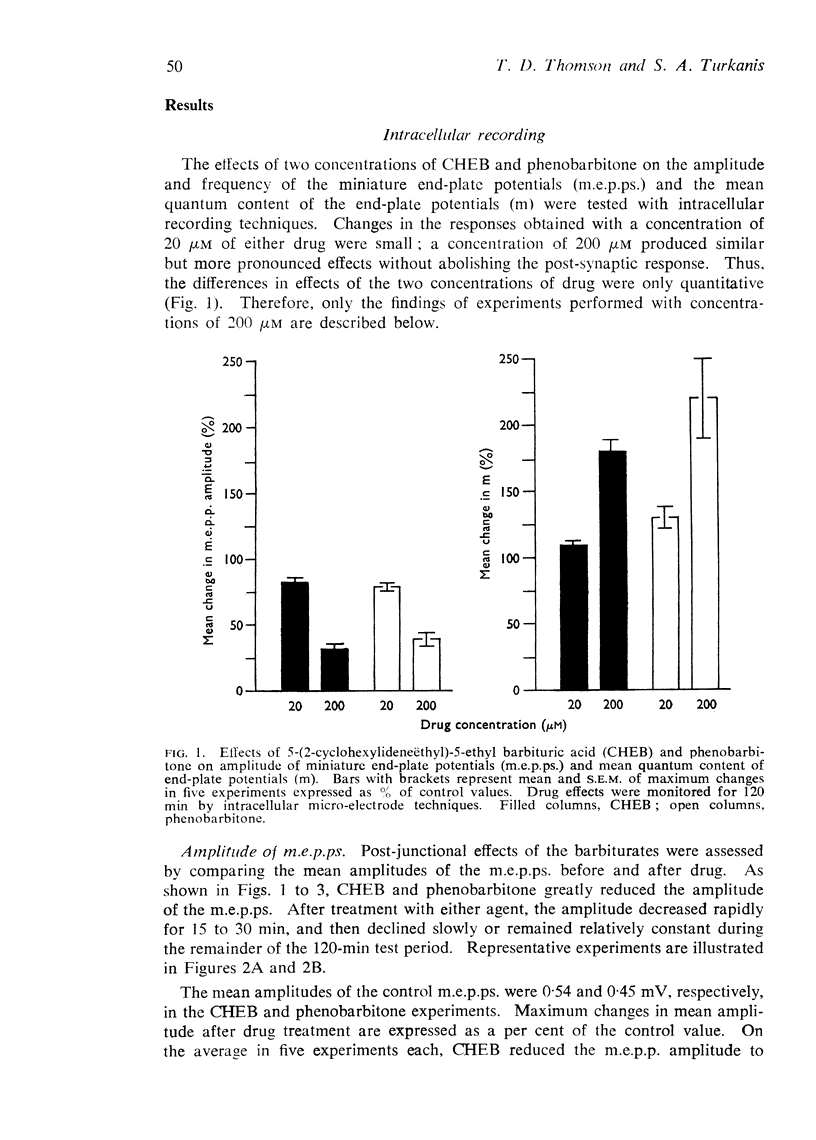
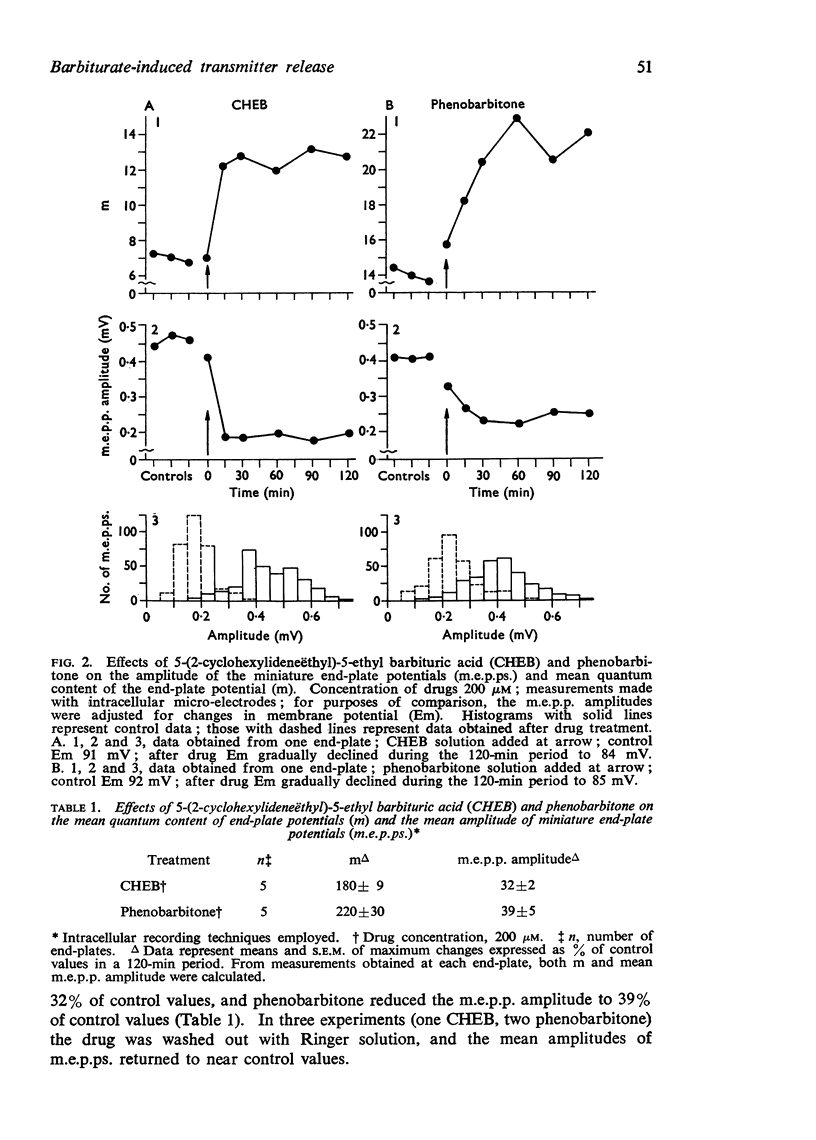
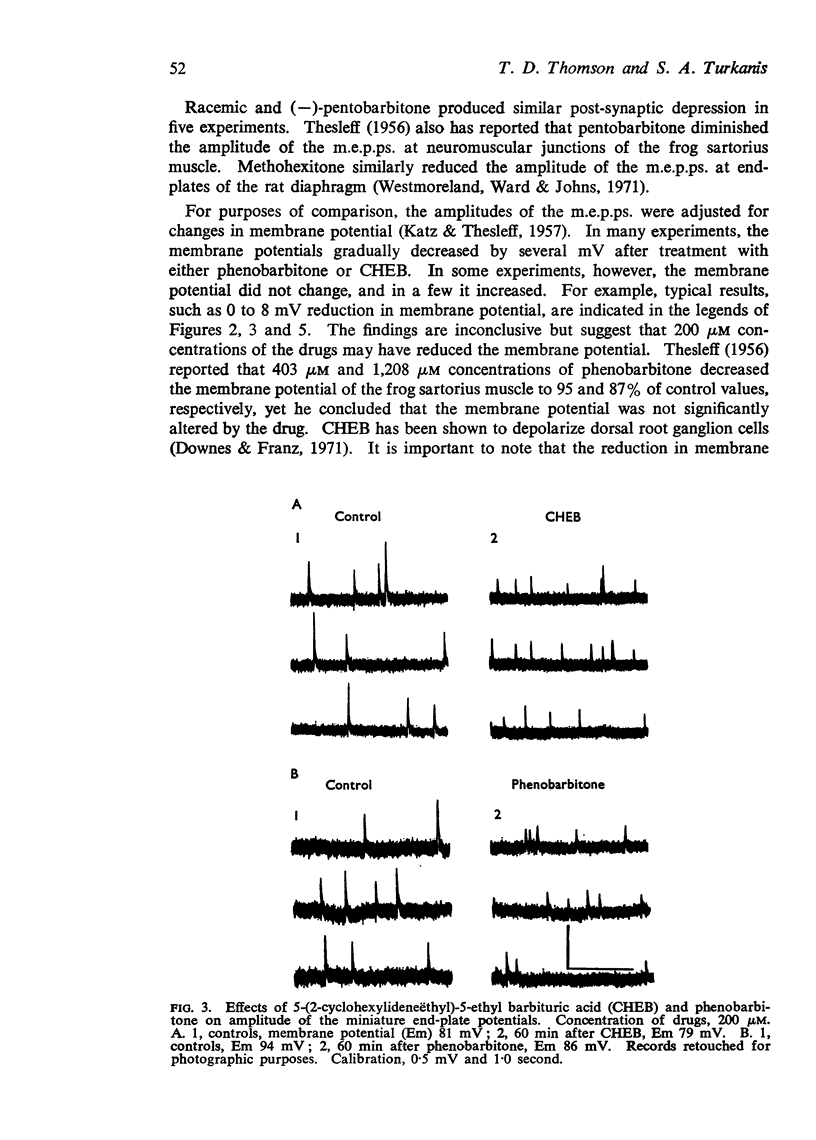
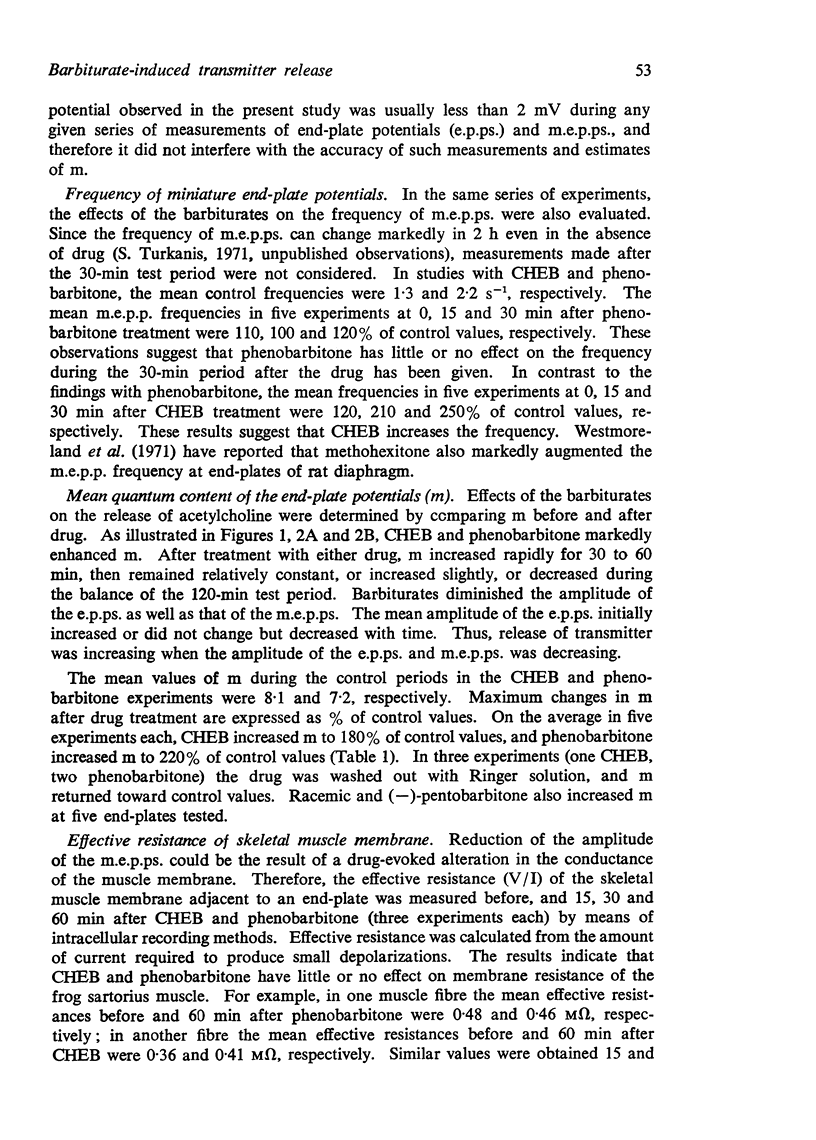
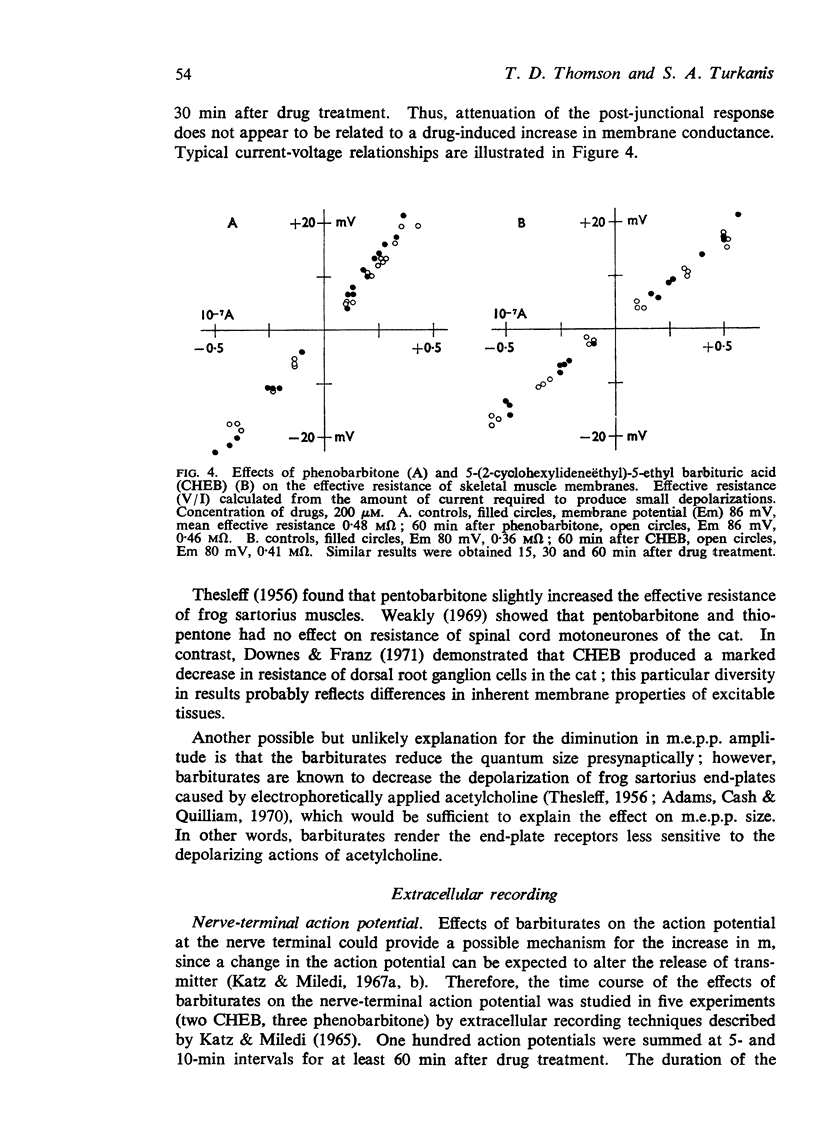
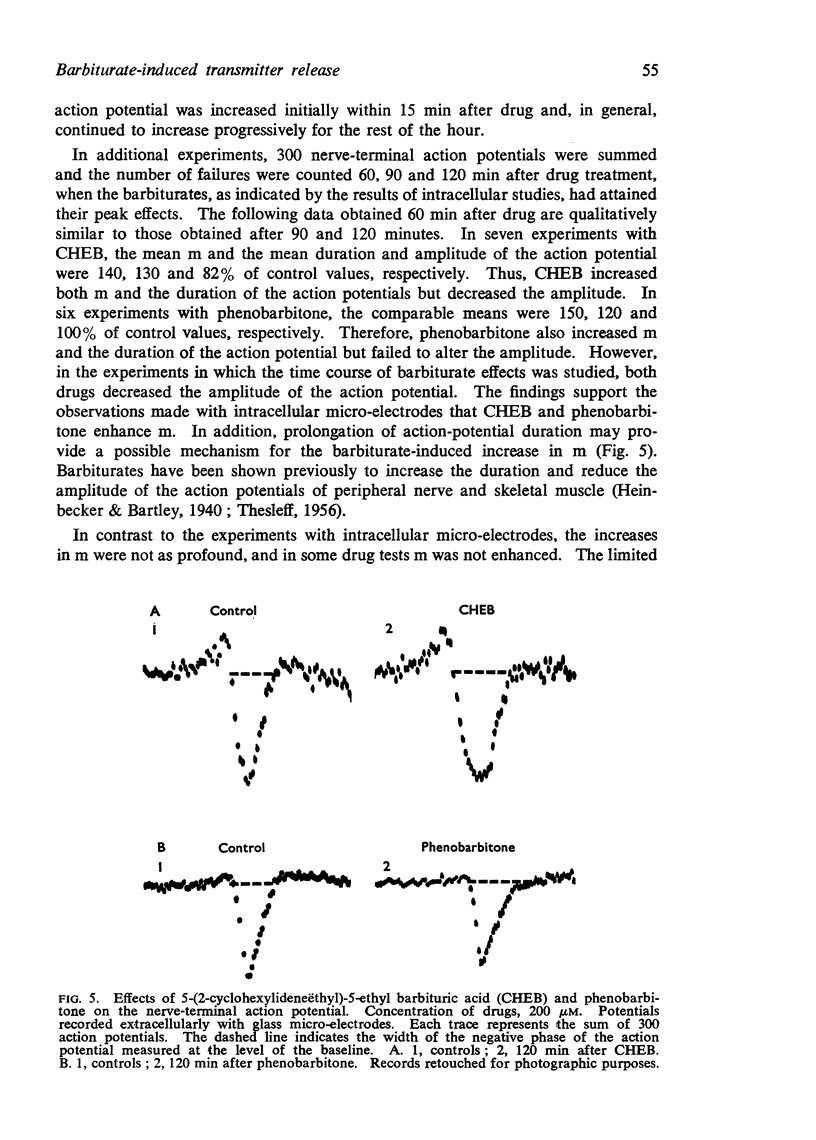
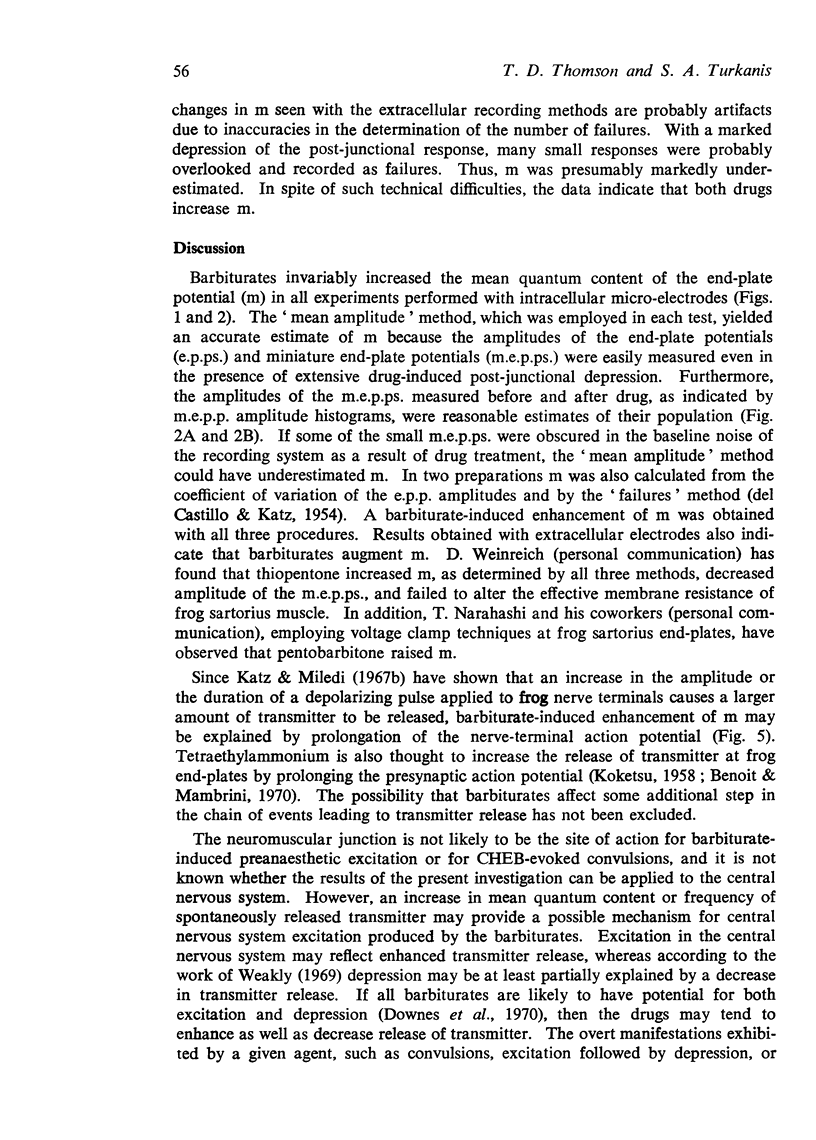
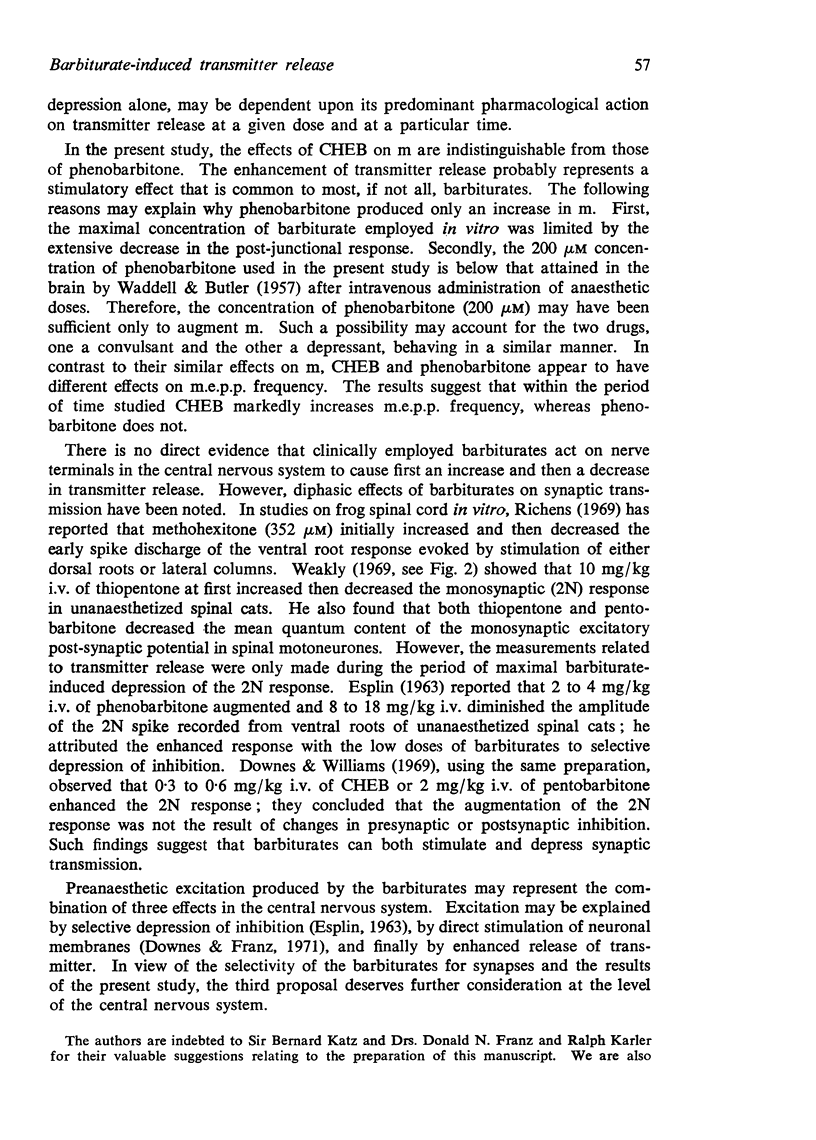
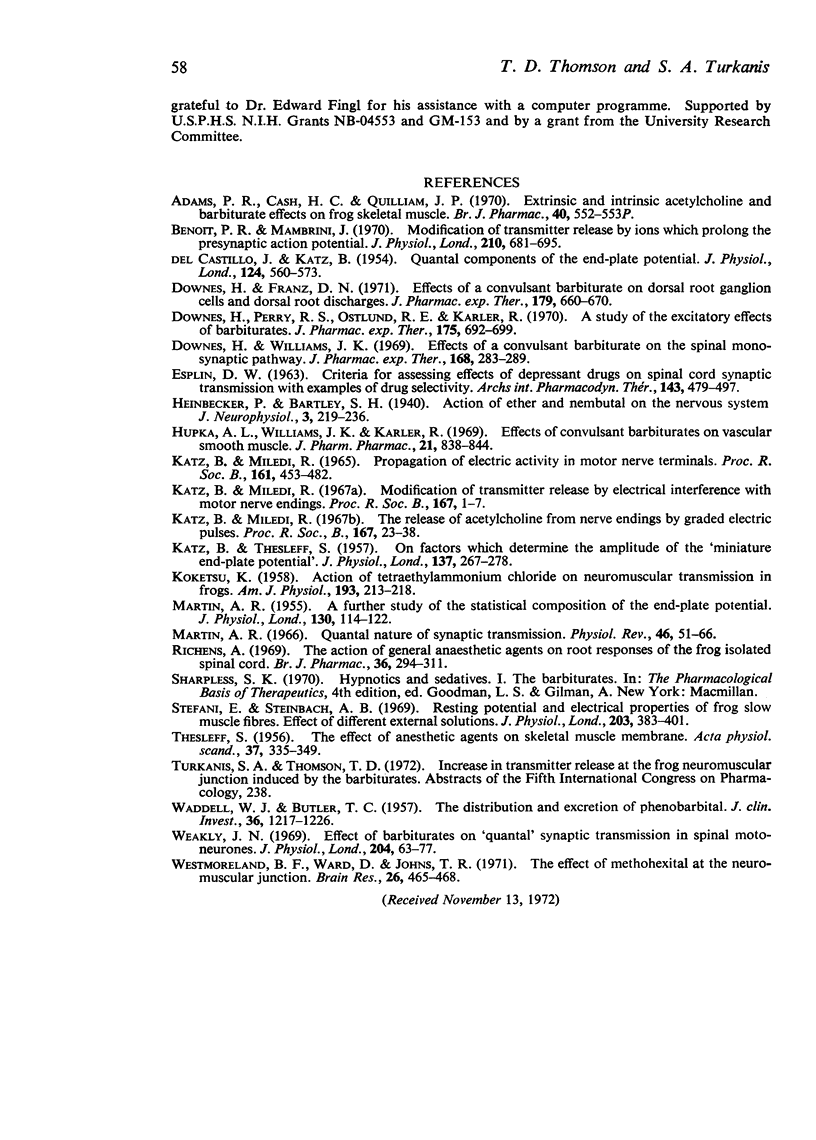
Selected References
These references are in PubMed. This may not be the complete list of references from this article.
- Adams P. R., Cash H. C., Quilliam J. P. Extrinsic and intrinsic acetylcholine and barbiturate effects on frog skeletal muscle. Br J Pharmacol. 1970 Nov;40(3):552P–553P. [PMC free article] [PubMed] [Google Scholar]
- Benoit P. R., Mambrini J. Modification of transmitter release by ions which prolong the presynaptic action potential. J Physiol. 1970 Oct;210(3):681–695. doi: 10.1113/jphysiol.1970.sp009235. [DOI] [PMC free article] [PubMed] [Google Scholar]
- DEL CASTILLO J., KATZ B. Quantal components of the end-plate potential. J Physiol. 1954 Jun 28;124(3):560–573. doi: 10.1113/jphysiol.1954.sp005129. [DOI] [PMC free article] [PubMed] [Google Scholar]
- Downes H., Franz D. N. Effects of a convulsant barbiturate on dorsal root ganglion cells and dorsal root discharges. J Pharmacol Exp Ther. 1971 Dec;179(3):660–670. [PubMed] [Google Scholar]
- Downes H., Perry R. S., Ostlund R. E., Karler R. A study of the excitatory effects of barbiturates. J Pharmacol Exp Ther. 1970 Dec;175(3):692–699. [PubMed] [Google Scholar]
- Downes H., Williams J. K. Effects of a convulsant barbiturate on the spinal monosynaptic pathway. J Pharmacol Exp Ther. 1969 Aug;168(2):283–289. [PubMed] [Google Scholar]
- Hupka A. L., Williams J. K., Karler R. Effects of convulsant barbiturates on vascular smooth muscle. J Pharm Pharmacol. 1969 Dec;21(12):838–844. doi: 10.1111/j.2042-7158.1969.tb08182.x. [DOI] [PubMed] [Google Scholar]
- KATZ B., MILEDI R. PROPAGATION OF ELECTRIC ACTIVITY IN MOTOR NERVE TERMINALS. Proc R Soc Lond B Biol Sci. 1965 Feb 16;161:453–482. doi: 10.1098/rspb.1965.0015. [DOI] [PubMed] [Google Scholar]
- KATZ B., THESLEFF S. On the factors which determine the amplitude of the miniature end-plate potential. J Physiol. 1957 Jul 11;137(2):267–278. doi: 10.1113/jphysiol.1957.sp005811. [DOI] [PMC free article] [PubMed] [Google Scholar]
- KOKETSU K. Action of tetraethylammonium chloride on neuromuscular transmission in frogs. Am J Physiol. 1958 Apr;193(1):213–218. doi: 10.1152/ajplegacy.1958.193.1.213. [DOI] [PubMed] [Google Scholar]
- Katz B., Miledi R. Modification of transmitter release by electrical interference with motor nerve endings. Proc R Soc Lond B Biol Sci. 1967 Jan 31;167(1006):1–7. doi: 10.1098/rspb.1967.0008. [DOI] [PubMed] [Google Scholar]
- Katz B., Miledi R. The release of acetylcholine from nerve endings by graded electric pulses. Proc R Soc Lond B Biol Sci. 1967 Jan 31;167(1006):23–38. doi: 10.1098/rspb.1967.0011. [DOI] [PubMed] [Google Scholar]
- MARTIN A. R. A further study of the statistical composition on the end-plate potential. J Physiol. 1955 Oct 28;130(1):114–122. doi: 10.1113/jphysiol.1955.sp005397. [DOI] [PMC free article] [PubMed] [Google Scholar]
- Richens A. The action of general anaesthetic agents on root responses of the frog isolated spinal cord. Br J Pharmacol. 1969 Jun;36(2):294–311. doi: 10.1111/j.1476-5381.1969.tb09507.x. [DOI] [PMC free article] [PubMed] [Google Scholar]
- Stefani E., Steinbach A. B. Resting potential and electrical properties of frog slow muscle fibres. Effect of different external solutions. J Physiol. 1969 Aug;203(2):383–401. doi: 10.1113/jphysiol.1969.sp008869. [DOI] [PMC free article] [PubMed] [Google Scholar]
- THESLEFF S. The effect of anesthetic agents on skeletal muscle membrane. Acta Physiol Scand. 1956 Nov 5;37(4):335–349. doi: 10.1111/j.1748-1716.1956.tb01369.x. [DOI] [PubMed] [Google Scholar]
- WADDELL W. J., BUTLER T. C. The distribution and excretion of phenobarbital. J Clin Invest. 1957 Aug;36(8):1217–1226. doi: 10.1172/JCI103518. [DOI] [PMC free article] [PubMed] [Google Scholar]
- Weakly J. N. Effect of barbiturates on 'quantal' synaptic transmission in spinal motoneurones. J Physiol. 1969 Sep;204(1):63–77. doi: 10.1113/jphysiol.1969.sp008898. [DOI] [PMC free article] [PubMed] [Google Scholar]
- Westmoreland B. F., Ward D., Johns T. R. The effect of methohexital at the neuromuscular junction. Brain Res. 1971 Mar 5;26(2):465–468. [PubMed] [Google Scholar]


